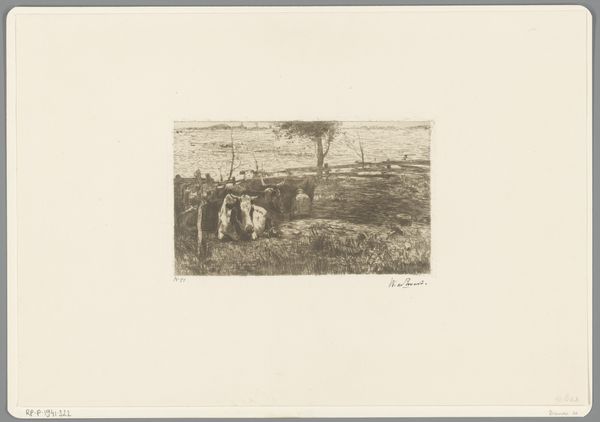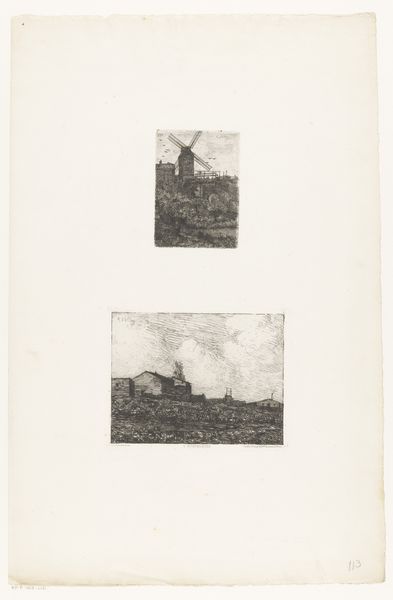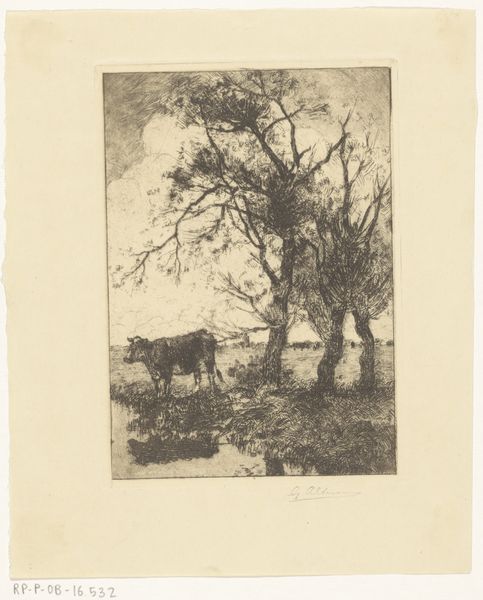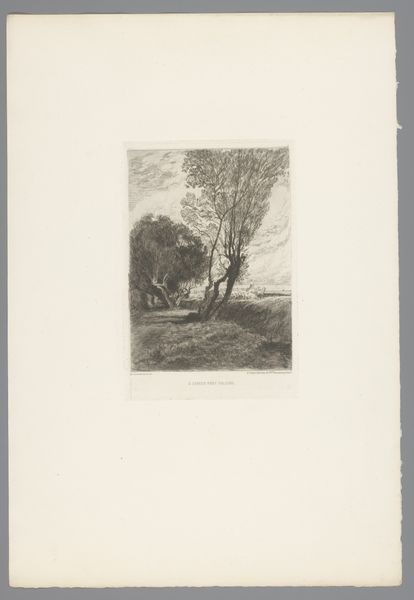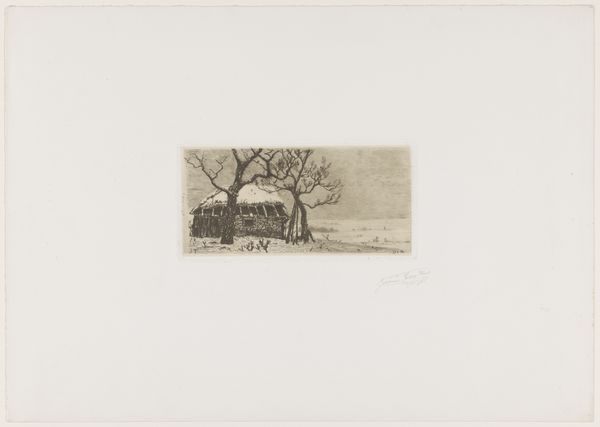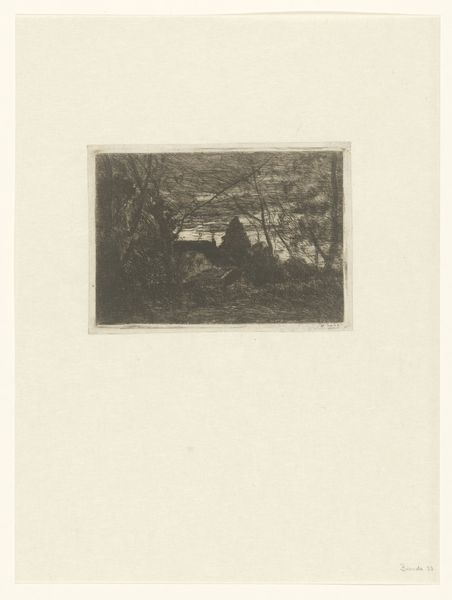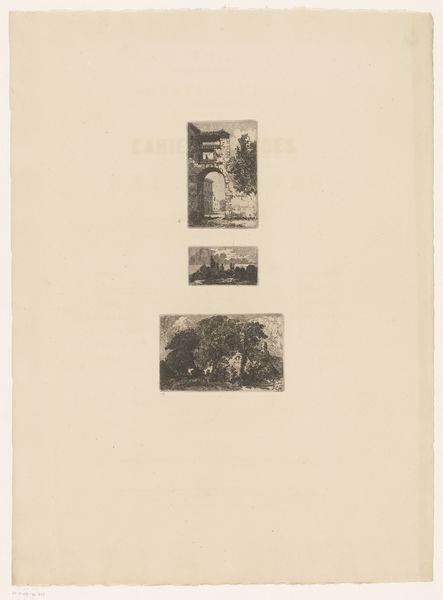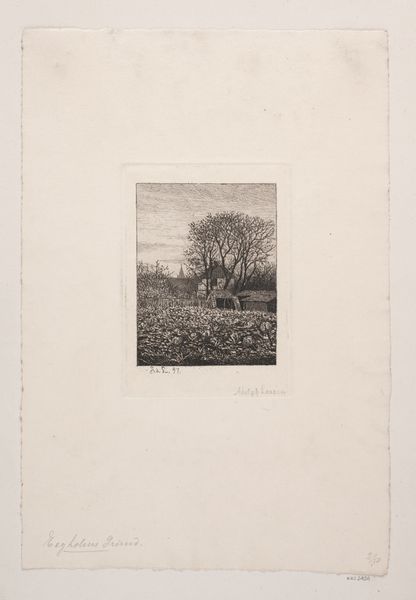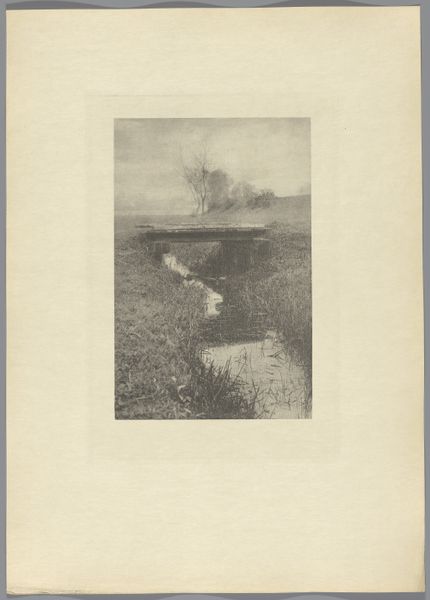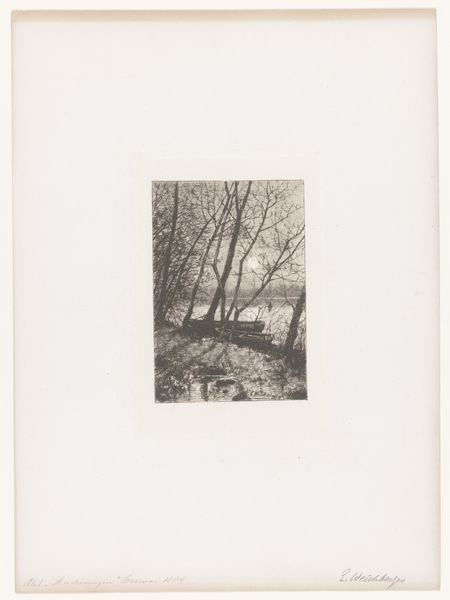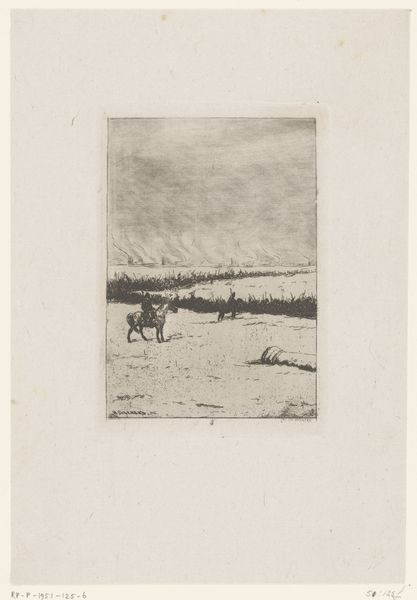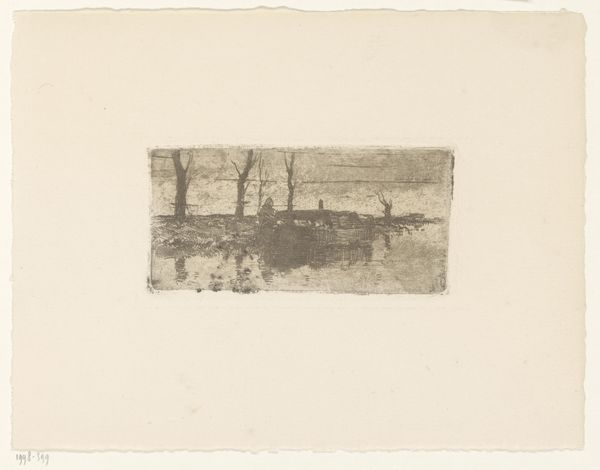
drawing, print, etching
#
pencil drawn
#
drawing
#
light pencil work
# print
#
etching
#
landscape
#
realism
#
monochrome
Dimensions: height 209 mm, width 159 mm
Copyright: Rijks Museum: Open Domain
Curator: This delicate etching, attributed to Henri Rul, is titled "Vrouw en koe staan bij een waterplas," placing us in a humble landscape. It's estimated to have been created sometime between 1872 and 1913. Editor: There's a beautiful stillness about this piece, almost melancholic. The stark monochrome and light pencil work create a sense of quiet solitude. Curator: The printmaking technique itself – the controlled corrosion of the plate by acid – mirrors the way the artist depicts nature slowly claiming the land, water gradually encroaching on the earth. We must consider the material production, how the artist engaged in a specific labor to render such a common rural motif. Editor: Indeed. But consider also how universal the pairing of woman and cow is within visual language. The cow, a symbol of nurturing and sustenance; the woman, intrinsically linked to both home and nature. Their reflection in the water evokes an archetypal bond, resonating with centuries of agrarian societies. Curator: I see a starker reality – etching and printmaking became methods accessible to a wider range of artists during this period. Did Rul deliberately choose a modest subject – woman, cow, puddle – to engage a broader, potentially rural, art-consuming audience? It is about production and access more than universal experience. Editor: It can be both. While distribution informs its reach, the imagery taps into deep-seated cultural narratives of pastoral life and our connection to the natural world. Notice how the hazy background blurs into the sky, symbolizing an ethereal presence—something beyond simple agrarian labor. Curator: Perhaps, but it’s crucial not to divorce the imagery from the context of its creation. The etcher carefully biting the lines, the paper-making process; all these materials and processes contributed directly to the experience this work provides. The “ethereal presence” is crafted, materially. Editor: A fair point, that craftsmanship elevates the subject. Ultimately, whether one views it through the lens of process or symbolic weight, the image succeeds in evoking a certain, lingering sentiment. Curator: Absolutely, understanding how these etchings were produced can make us consider these landscapes and what part labor plays in shaping them.
Comments
No comments
Be the first to comment and join the conversation on the ultimate creative platform.
